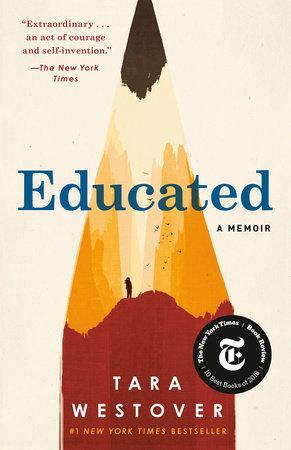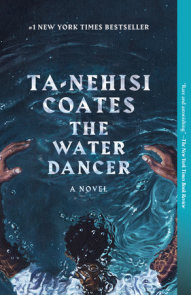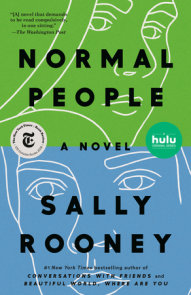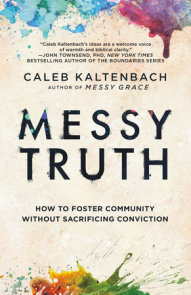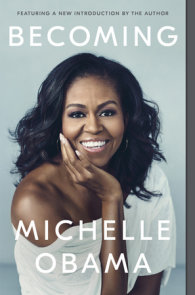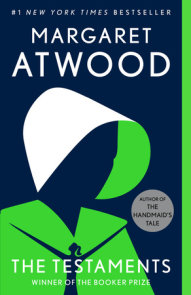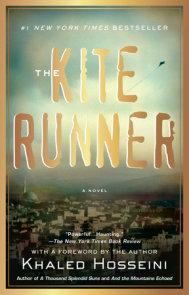TEACHING GUIDE
NOTE TO TEACHERS
Please click on the PDF link at the bottom of this page to download the Teacher’s Guide.
Note to the Teacher
Educated gives students an opportunity to grapple with one of life’s most important and difficult questions—what does it mean to change one’s life, and what are the costs of real change?
Supporting the national Common Core State Standards (CCSS) in reading informational text for high school curriculums, Educated is an appropriate selection for grades 11 and 12 in Language Arts classes as well as for Advanced Placement® English Literature and Composition and English Language and Composition. At the college level, the book is appropriate for Composition, Literature, and Gender Studies courses and is also ideal for first-year and common reading programs.
In the following Examining Content Using Common Core State Standards section of this guide, the prompts provide for a critical analysis of Educated using the CCSS for Informational Text for grades 11 and 12 and are organized according to the standard they primarily support. In addition, at the end of each standard and the corresponding prompts, a classroom activity is provided that will enhance analysis of the text and give the students the opportunity to examine the way the ideas and situations in the book connect to their own lives.
For a complete listing of the Standards, go to: www.corestandards.org/the-standards
Pre-Reading Activities
Teachers and students will have a richer reading experience if they take the time to familiarize themselves with Tara Westover. Educators might ask students to watch or read short interviews or listen to podcasts featuring Tara to gain an appreciation for who she is. Tara has multimedia clips available on her website (tarawestover.com/media) that provide an introduction to her life and points of discussion that prime students for reading the text. Teachers can have students consider themes, ideas, and questions the videos introduce, using those responses as points of entry for the memoir.
In each section of the memoir, teachers might ask probing questions about the lessons Tara is learning. Who are her teachers? How do the lessons she’s learning change the way she sees herself, her place in her family, and her place in the broader world?
The memoir is divided into three parts. The conclusion of each section provides opportunities for reflection and analysis, especially in writing. Teachers might ask students to write in their journals or complete other low-stakes exploratory writing about any part of the text that resonates with them. These shorter, regular writing practices can be adapted into longer, more formalized pieces at the conclusion of the text study.
Note to teachers about trigger warnings: It is important that teachers take the time to create community agreements with students that enable the discussion of sensitive and controversial topics. Educated has intense scenes of violence and assault. It is imperative that teachers read the text first and alert students to moments in the text that could elicit strong emotions. Additionally, the “N-word” is used by Tara’s brother, Shawn. Thoughtful discussions about the word’s history and function in the memoir are recommended. Please see the Resources section for additional information.
Examining Content Using Common Core State Standards
Key Ideas and Details
CSS.ELA-LITERACY.RI.11-12.3 Analyze a complex set of ideas or sequence of events and explain how specific individuals, ideas, or events interact and develop over the course of the text.
· Tara’s father subscribes to many unusual theories and beliefs. Do those theories and beliefs seem strange to Tara? How do they shape the way her family lives?
· “I reached for those voices, reached into my mind—and there they were. Nothing had ever felt so natural; it was as if I’d thought the sound” (p. 82). Tara is reluctant to apply to BYU until Tyler tells here that she can get a degree in music. There is a tendency in institutional education to push people away from what they love and toward what might be useful in preparing them for a career. How did Tara’s love of music influence the shape of her life?
· “I can go to school, I had written in my journal that very afternoon. And I can buy clothes. But I am still Tara Westover. I have done jobs no Cambridge student would do. Dress us any way you like, we are not the same” (p. 242). Even though Tara does well at Cambridge, she believes that she doesn’t deserve to be there. Why does she feel this way? Why is it hard for her to accept that she belongs? Is there an important difference between her and the other students? Or is the difference only in her mind?
· Tara spends her first months at college working several jobs, trying to scrape together enough money for food and rent. Why does not having enough money make it hard for her to focus on her education? What does she mean when she says that the most powerful advantage of money is “the ability to think of things besides money” (p. 207)?
Discussion Questions
Pose the following questions to the students, emphasizing their personal connection to the ideas in the text.
· What’s the difference between an education that you choose for yourself and one someone chooses for you? What would you pursue, if given the chance?
· Is there anything in your life that you love the way Tara loves music? How do you feel when you are doing it?
· Just as Tara doesn’t feel that she is good enough to belong at Cambridge, what stories do you tell yourself about who you are that might make you think you don’t belong in certain places?
· Tara says that the primary advantage of money is the freedom to think of things besides money. Do you believe that? Think about your own life and needs. How much money do you think you will need to make in order to be content?
· Tara has written the story of her life. Think of your own life as if it were a story. What is the shape of that story? What part of the story are you at now? Like Tara, have you had moments that looked like failures? What happened next?
Classroom Activity
Students may have strong reactions to how Shawn and her father treat Tara and other women in the text. Drawing on the work of the Teaching Tolerance series on toxic masculinity, a teacher might help students think about the connections between masculinity, aggression, and violence. In a Socratic seminar, teachers can have students track Tara’s interactions with Shawn and her father throughout the text and use them as a basis for a discussion (tiny.cc/TeachingMasculinity).
Buck’s Peak is on a mountain Tara calls the Indian Princess. A teacher could use the Tribal Nations Map (see the Resources section at the end of the guide) to lead students in a study about the history of the Native American nations that lived in Idaho, citing examples from the text for reference. Once students have that knowledge, they can then learn about land acknowledgements using the Honor Native Land guide (also available in the Resources section) and how to support current efforts by Native American nations as a result of those acknowledgements.
Discussion Questions
CCSS.ELA-LITERACY.RL.11-12.2 Determine two or more themes or central ideas of a text and analyze their development over the course of the text, including how they interact and build on one another to produce a complex account; provide an objective summary of the text.
FEMINISM:
1. “Tyler had said I was special once . . . there was something in me, something like what was in the prophets, and that it was not male or female, not old or young; a kind of worth that was inherent and unshakable. . . . Suddenly that worth felt conditional . . . It was not inherent; it was bestowed” (p. 119). What shakes Tara’s confidence in her worth? How does she rebuild this sense of her own worth?
2. Tara grows up in a world that has made many assumptions about women: what they are good at and how they’re supposed to behave, when they should get married and have children, and so on. In college Tara reads the 19th-century philosopher John Stuart Mill, who said that a woman cannot be defined, because the nature of women is “a subject on which nothing final can be known.” Mill’s refusal to define what a woman is is very liberating for Tara. Why? Does it free her to define herself?
ABUSE:
1. “It’s strange how you give the people you love so much power over you, I had written in my journal. But Shawn had more power over me than I could possibly have imagined. He had defined me to myself, and there’s no greater power than that” (p. 199). What’s the evolution of Tara’s relationship with Shawn? Why is she so drawn to him when he first moves back home? When does she begin to understand that even though she loves him, she needs to protect herself from him?
2. “It was a game, he says. He had no idea he’d hurt me until he saw me cradling my arm at the site. . . . He brings me ice wrapped in a dish towel and says next time we’re having fun, I should tell him if something is wrong” (p. 195). Abuse can alter your conception of reality. Discuss the concept of gaslighting and why it’s so difficult at first for Tara to claim her own version of events.
3. “I learned to accept my decision for my own sake . . . Because I needed it, not because he deserved it. It was the only way I could love him” (p. 328). Tara writes about forgiving her father, but at the same time she has chosen to remain estranged from him. What does it mean to forgive someone but choose not to have them in your life?
4. “I believed myself invincible” (p. 191). Tara says that asking for help was crucial to healing after her brother’s attacks but that, at the same time, asking for help was nearly impossible for her to do. She couldn’t stand to feel vulnerable. Why is it that when people need help the most they find it hard to ask for it? Why is it that when we are struggling we isolate ourselves?
BELIEF AND FAITH:
“Negative liberty . . . is the freedom from external obstacles or constraints. . . . positive liberty is self-mastery—the rule of the self, by the self. To have positive liberty, he explained, is to take control of one’s own mind; to be liberated from irrational fears and beliefs, from addictions, superstitions and all other forms of self-coercion” (p. 256). Tara’s lecturer at Cambridge describes Isaiah Berlin’s concepts of negative and positive liberty. Though she doesn’t understand the concepts at first, they become important principles for her as she struggles to reconcile her loyalty to her family with her desire to forge her own mind.
1. “‘People take drugs for pain,’ he said, ‘it’s normal’” (p. 183). Here Charles tries to convince Tara to take an ibuprofen for her earache. Why can’t Tara take it at first? What has she learned at home about professionalized medicine? Why does she feel that taking the medicine would be a betrayal of her family’s beliefs?
2. “The word and the way Shawn said it hadn’t changed; only my ears were different” (pp. 180–81). Tara had never heard of the civil rights movement until she went to college. How does learning about it change her understanding of the role race has played in American history? How does it change her behavior?
3. “What is a person to do, I asked, when their obligations to their family conflict with other obligations—to friends, to society, to themselves?” (p. 317). Tara changes as a result of her education. She changes her ideas about race and gender. She wants better treatment for others, but she also wants better treatment for herself, and that puts her on a path of conflict with her brother Shawn and her parents. What does Tara feel she owes her family? How does she try to balance her desire to be loyal to her family with her need to be loyal to herself?
Discussion Questions
Pose the following questions to the students, emphasizing their personal connection to the ideas in the text.
· Have there been times in your life when people tried to define you, create a narrative and an identity for you? Did you believe in that narrative? Did you come to realize that some or all of it didn’t fit?
· Have you ever read a book and felt forbidden to disagree with it?
· Have you ever felt you had to be true to yourself even if it put you at odds with people you love?
· Why do we read books about people whose lives are different from our own? Have you ever learned about someone whose life seemed dramatically different from yours? How did that change the way you saw your own life? Are there lives you see that you cannot imagine living? What life do you imagine for yourself?
Classroom Activity
“I didn’t want to be Horatio Alger in someone’s tear-filled homage to the American dream. I wanted my life to make sense, and nothing in that narrative made sense to me” (p. 249). Lead a discussion with students that compares Educated to other narratives and ideas about the American Dream. Students can be encouraged to draw on their background knowledge and other texts they’ve read.
Craft and Structure
CSS.ELA-LITERACY.RI.11-12.6 Determine an author’s point of view or purpose in a text in which the rhetoric is particularly effective, analyzing how style and content contribute to the power, persuasiveness or beauty of the text.
“One winter, when I was very young, Luke found a great horned owl in the pasture” (p. 163). How does the author use this story to illuminate her experience at college? Tara writes a book about the fact that her parents don’t believe her. Why give other points of view?
Classroom Activity
Construct a “syllabus” of all the texts Tara reads throughout the memoir. Then, in book groups or individually, have students read one of these texts and compare it to what Tara writes about it, their own opinion of the text, and how it deepens their understanding of her experiences.
Resources
“Tribal Nations Maps,” Data.gov (tiny.cc/TribalNations)
“Leaning into Difficult Topics: Toward an Informed Stance,” Tricia Ebarvia, Moving Writers (tiny.cc/DifficultTopics)
“K-W-L Charts,” Facing History and Ourselves (tiny.cc/KWLCharts)
“Hate Makes a Comeback in the Pacific Northwest,” Nicholas K. Geranios, The Denver Post (tiny.cc/HateInPNW)
“Socratic Seminar: Teaching the N-Word,” Teaching Channel (tiny.cc/TeachingChannel)
“Honor Native Land: A Guide and Call to Acknowledgment,” U.S. Department of Arts and Culture (tiny.cc/HonorNativeLand)
Other Works of Interest
Maya Angelou, I Know Why the Caged Bird Sings
Margaret Atwood, The Handmaid’s Tale
Isaiah Berlin, “Two Concepts of Liberty: An Inaugural Lecture Delivered before the University of Oxford on 31 October 1958”
Frederick Douglass, Narrative of the Life of Frederick Douglass
Benjamin Franklin, The Autobiography of Benjamin Franklin
John Stuart Mill, The Subjugation of Women
Jeannette Winterson, Why Be Happy When You Could Be Normal?
Virginia Woolf, “A Sketch of the Past,” Moments of Being
About This Guide’s Writer
DR. KIMBERLY N. PARKER currently prepares preservice teachers at the Shady Hill School in Cambridge, MA. She taught English in a variety of school settings for 16 years, is active in the National Council of Teachers of English, and is a co-founder of #DisruptTexts. Dr. Parker holds a PhD in Curriculum and Instruction from the University of Illinois-Urbana Champaign.
×
Become a Member
Just for joining you’ll get personalized recommendations on your dashboard daily and features only for members.
Find Out More Join Now Sign In






